Striking a balance between the two is particularly important in commercial environments, where high user traffic makes style and functionality paramount.
However, the number and variety of bathroom warehouse products on the market can make it difficult to decide which is most appropriate for your project, not to mention which will be the most healthy, hygienic solution for your purposes.
In this whitepaper, we explain the health reasons behind the need for hygienic bathrooms. We then focus on the urinal – one of the most crucial parts of the commercial toilets – and set forth the key factors for successful specification of this, before presenting design-based solutions for addressing each of these factors in turn.
Why Is Hygiene Important In The Bathrooms And Public Toilets?
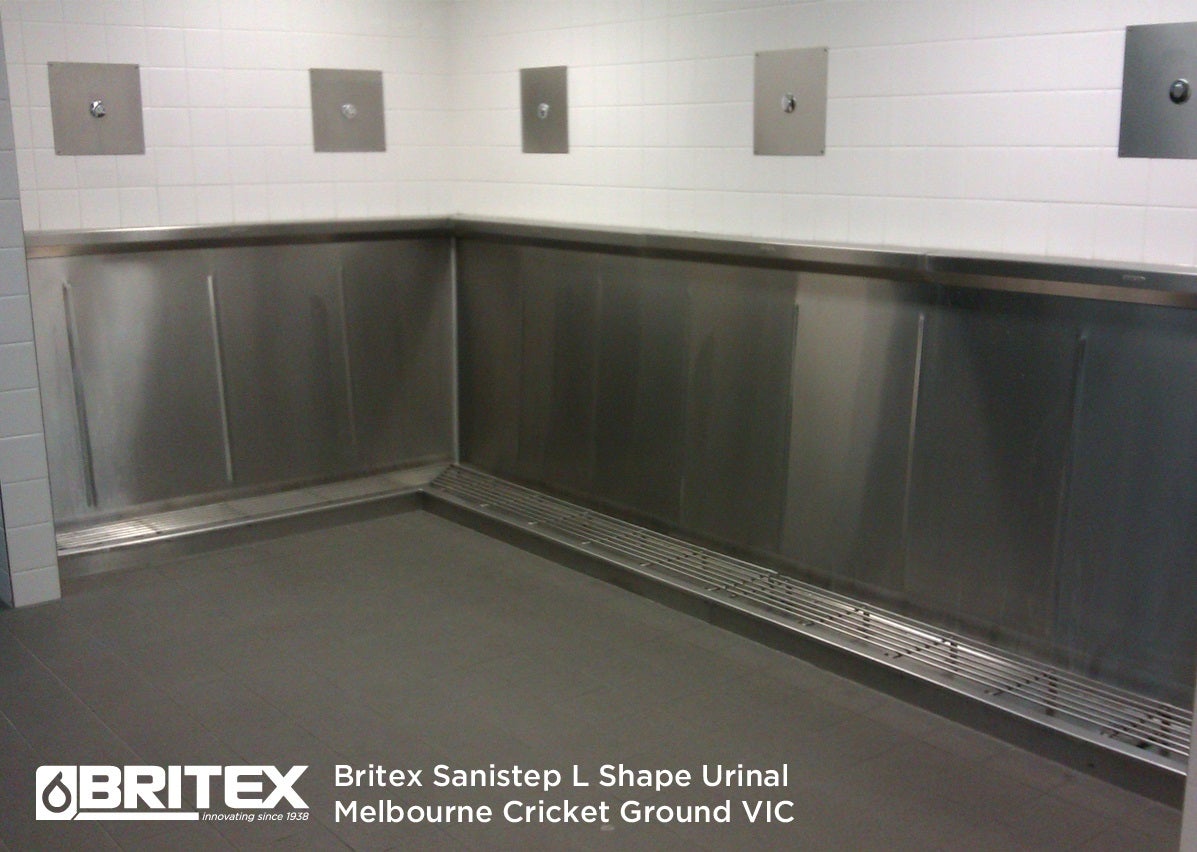
Good hygiene is important in every space, but is particularly crucial in damp, enclosed bathroom environments, which provide ideal conditions for bacterial growth and the spread of germs and diseases. Dirty bathroom floors are the perfect breeding ground for e-coli, while poorly maintained toilets and urinals allow salmonella to flourish. Both bacteria may cause a number of symptoms ranging from mild stomach cramps and headaches to more severe diarrhoea, nausea, and vomiting.
In commercial bathrooms and public toilets, the presence of bacteria and easy spread of germs is exacerbated by the high number and frequency of users, all of whom introduce their own germs into the space. Thankfully, advances in technology have made it possible to maintain good hygiene via bathroom products that are both functional and stylish.
Striking A Balance Between Practicality And Aesthetics:
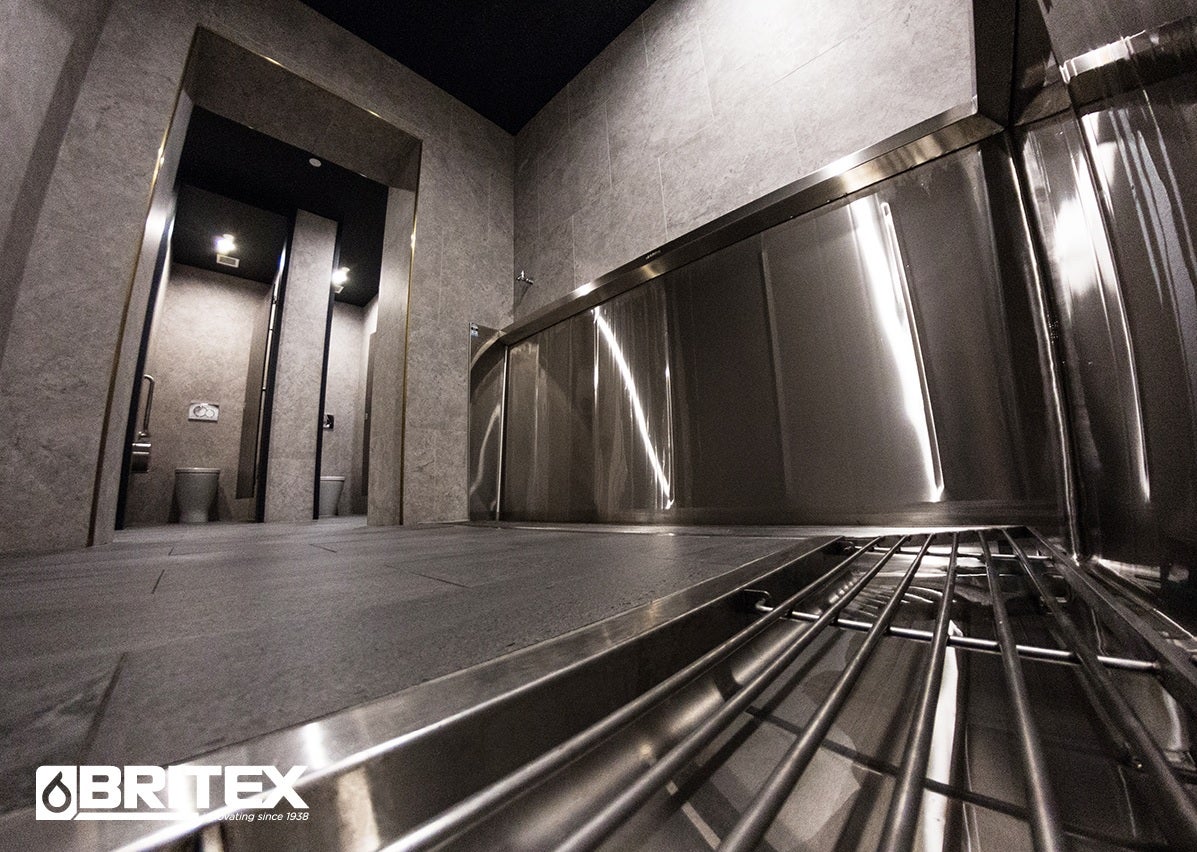
When designing for busy commercial toilets, designers often seek for bathroom warehouse solutions that fit the “style” of the rest of the project. Increasingly, however, many products compromise on functionality in favour of a streamlined, minimalist aesthetic.
Below, we outline the key considerations that designers must take into account to find the middle ground between practicality and aesthetics.
Practicality
Preventing odours
Pod urinals, which are favoured for their minimalist style and compact frame, often cause urine to drip onto the floor, where it seeps into the grout and concrete. Even with regular cleaning, it is impossible to entirely eliminate stains and odours.
Urine drips may adhere to the soles of users’ shoes, which subsequently track the liquid throughout the bathroom and sometimes even into the rest of the building.
To combat this, urinals should be designed to catch drips and prevent spillage onto the floor. Ideally, the top of the urinal should spread water evenly, covering the entire body of the urinal and thoroughly rinsing out the base to clean out all waste.
A floor grate to stand on should keep feet far from contamination and allow all drops and messes to fall directly into the gutter of the urinal, thus reducing the spread of urine and minimising the transfer of bacteria and odours.
Flushing power
Practicality should not come at the expense of performance. Urinals typically flush in one of three ways.
Waterless urinals are designed to remove the need for flushing after each use, but still need to be cleared for hygiene purposes, with regularity of cleaning depending on frequency of use. There are two different types of waterless urinals.
The first, an oil-based cartridge, introduces a layer of oil into the urinal trap to create a seal above the urine and prevent smells.
The effectiveness of this type of cartridge is dependent on regular maintenance, which may be an issue in certain contexts. The second type is a silicone diaphragm system that opens under pressure from urine or water and automatically closes once the stream of liquid – and therefore pressure – has stopped.
Waterless urinals are favoured for their water savings, and typically adopt a pod style. However, pod style urinals can allow waste to drip onto the floor and allow odours to develop throughout the bathroom area. Often, waterless urinals are subject to inadequate or irregular maintenance, which exacerbates hygiene issues.
Manual activation cisterns release stored water from a tank – which is typically made from porcelain, plastic or stainless steel – into a urinal via the flush-pipe. This type of cistern can be installed either externally or in-wall, and releases the full preset amount of water with each activation. As their name implies, manual activation cisterns rely on the user to activate the system after use.
Advantages include low costs and maintenance requirements, in addition to fast water release and suitability for low water pressure settings. Disadvantages include the risk of cross-contamination between users and activations and a high susceptibility to vandalism. Wall mounted styles are also generally considered aesthetically unappealing within a contemporary context.
Direct mains water flushes are the most hygienic
activation systems. Incorporating a sensor unit, these flushes are automatically triggered once someone has approached and walked away from the urinal or the urinal has not been used for a specified period of time- whichever occurs first. Direct mains water flushes are advantageous as they are hygienic, vandal resistant, and discreet.
Some products offer maximum water savings with every flush, since they have the ability to count uses before flushing. The main disadvantages of this type of flush are its requirement of a power supply and higher initial cost. These are known as smart flush units.
Vandal resistance
This is particularly critical for ensuring peace of mind when the bathroom is in a high traffic environment such as entertainment venues, stadiums, hotels, pubs or clubs. Urinals in these environments should be fabricated from heavy, durable materials and should use a design that is as enclosed as possible, with minimal – if any – accessible seams or removable components.
Aesthetics
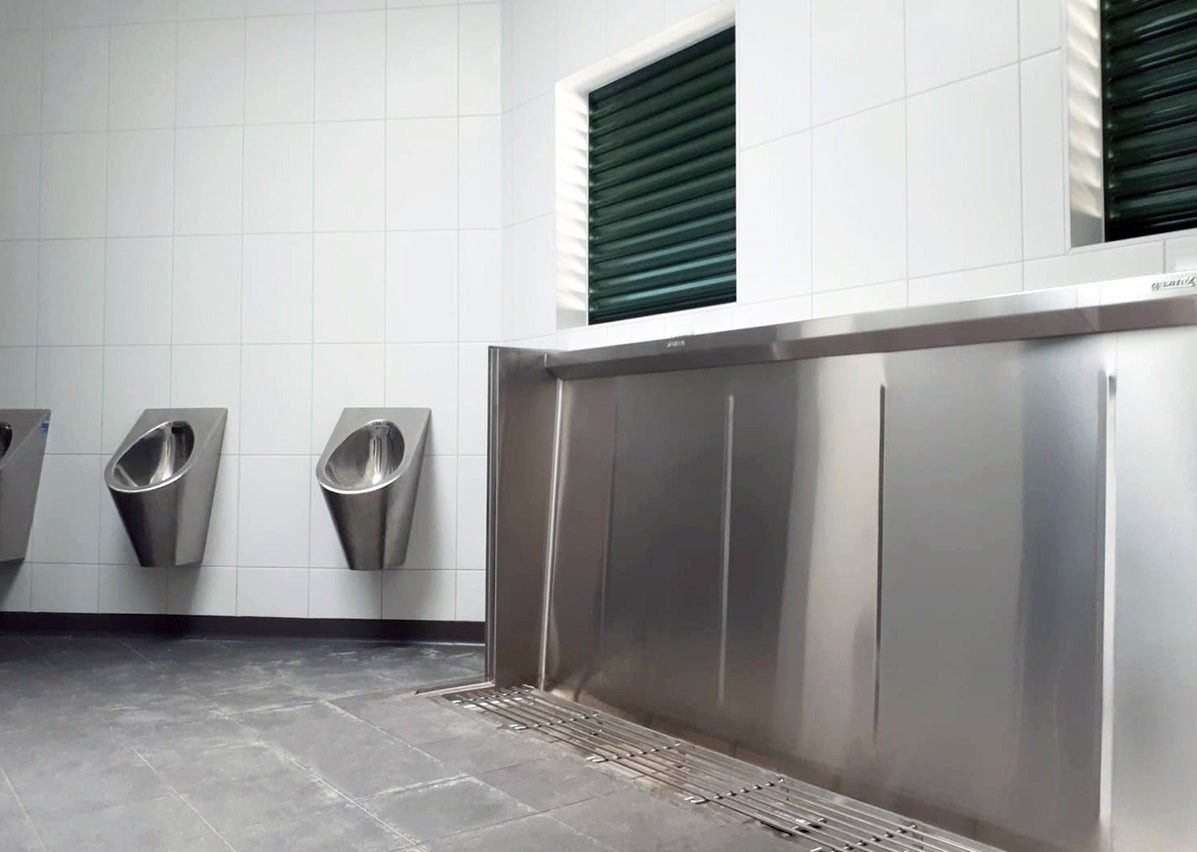
Contemporary aesthetics
Products should have a clean, contemporary look that will not date quickly, and recessing or concealment should be considered wherever possible. Urinals should be constructed from a durable material such as stainless steel for better aesthetic appearance, but more importantly easier cleaning and maximum overall hygiene.
Versatility
A wide range of urinal styles is available, with each style having its own unique features and benefits. Working on the bathroom requirements of any project, a solution can be found to suit aesthetics, water efficiencies, value management, frequency of use, maintenance regimes, and installation environments.
Stainless Steel Urinals have the advantage of flexibility, as they can be custom made to ensure fitness for purpose.
Ease of cleaning
Cleanliness is a matter of both hygiene and appearance.
As such, it is imperative that urinals are easy to clean, with few corners or other areas that are difficult to access. Stainless steel urinals that are clean, shiny, and well maintained are highly aesthetically appealing and can greatly enhance the appearance of a bathroom.
Design-based hygiene solutions
Responding to the demand for hygienic, practical bathroom products that balance practicality and aesthetics, the plumbing industry has developed an innovative suite of new technologies and products.
Britex Stainless Steel Regal Urinal Pods (UR)
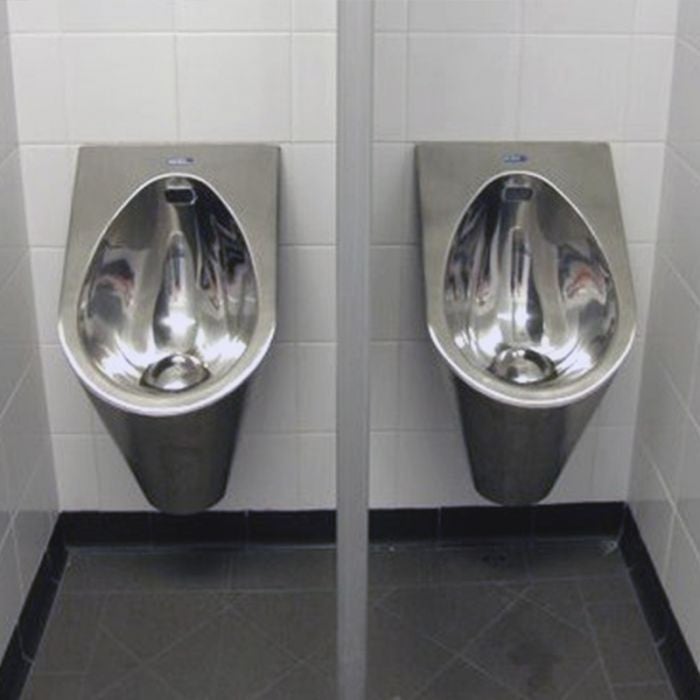
5* WELS. Vandal resistant stainless steel urinal with rear water inlet and optional sensor flush. Ideal for public amenities and commercial bathrooms.
Stainless Steel
Stainless steel is low carbon steel that contains an added 10.5% or more of chromium. The chromium allows formation of an invisible surface film of chromium-oxide that provides stainless steel with its characteristic corrosion resistance.
Adhering to a regular maintenance schedule allows stainless steel to maintain its passive layer, in which the chromium oxide film repairs itself when damaged. When properly maintained, stainless steel is strong and durable, with a long lifespan.
Widely regarded as the most hygienic material on the market, stainless steel will help prevent harbouring of bacteria and is extremely easy to maintain, making it well suited to public bathrooms. Stainless steel complies with all the relevant Australian Health Standards, and is both reliable and efficient; the material is 100% recyclable and manufactured from 65 to 80% reduced stainless steel scrap.
Floor Standing Stainless Steel Urinals With Trough
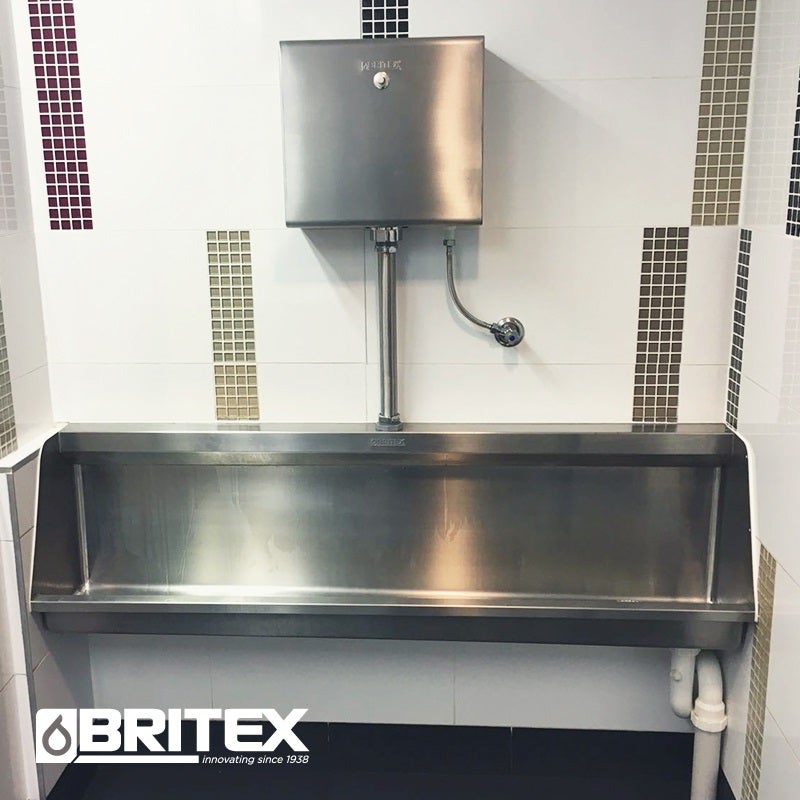
Balancing a sleek, contemporary aesthetic with outstanding cleanliness, floor standing stainless steel urinals provide an easy to clean, bacteria resistant surface.
Urinals of this type can be recessed into the floor for a flush finish that is the most practical means of catching drips and allows for more hygienic washing of the floor, with the trough doubling as a floor waste.
The floor standing configuration also allows the base of the trough to be thoroughly washed out with every flush.
Sensor Flushes
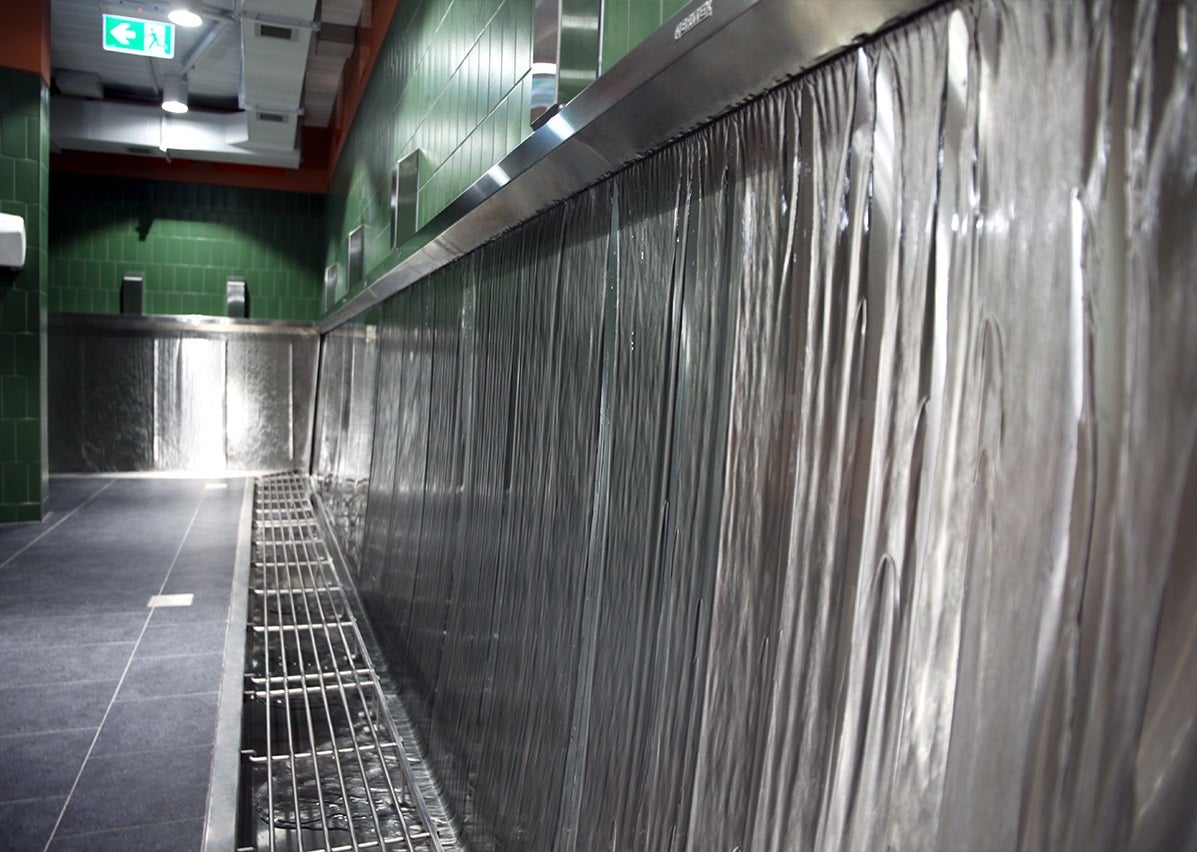
In line with an increasingly environmentally conscious design industry, many urinals incorporate sensors and ‘smart controls’ to reduce unnecessary flushing. Combined with efficient urinals, smart controls reduce water use by 40 to 50%. Responding directly to user traffic, smart controls provide the most economical use of water whilst allowing hygienic hands-free operation and maintaining a clean, presentable washroom environment.
Smart Saniflush Sensor System
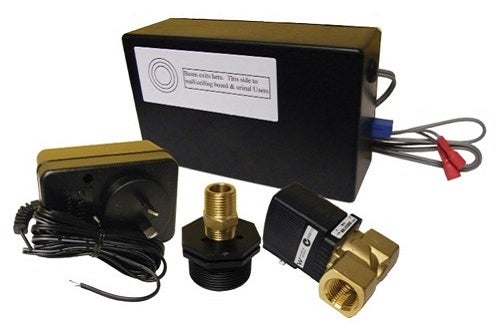
5* WELS. The ultimate water efficient, vandal-proof automatic urinal flusher. Fully concealed and mains-powered. Ideal for pairing with Britex urinals.
Sanistep Urinal
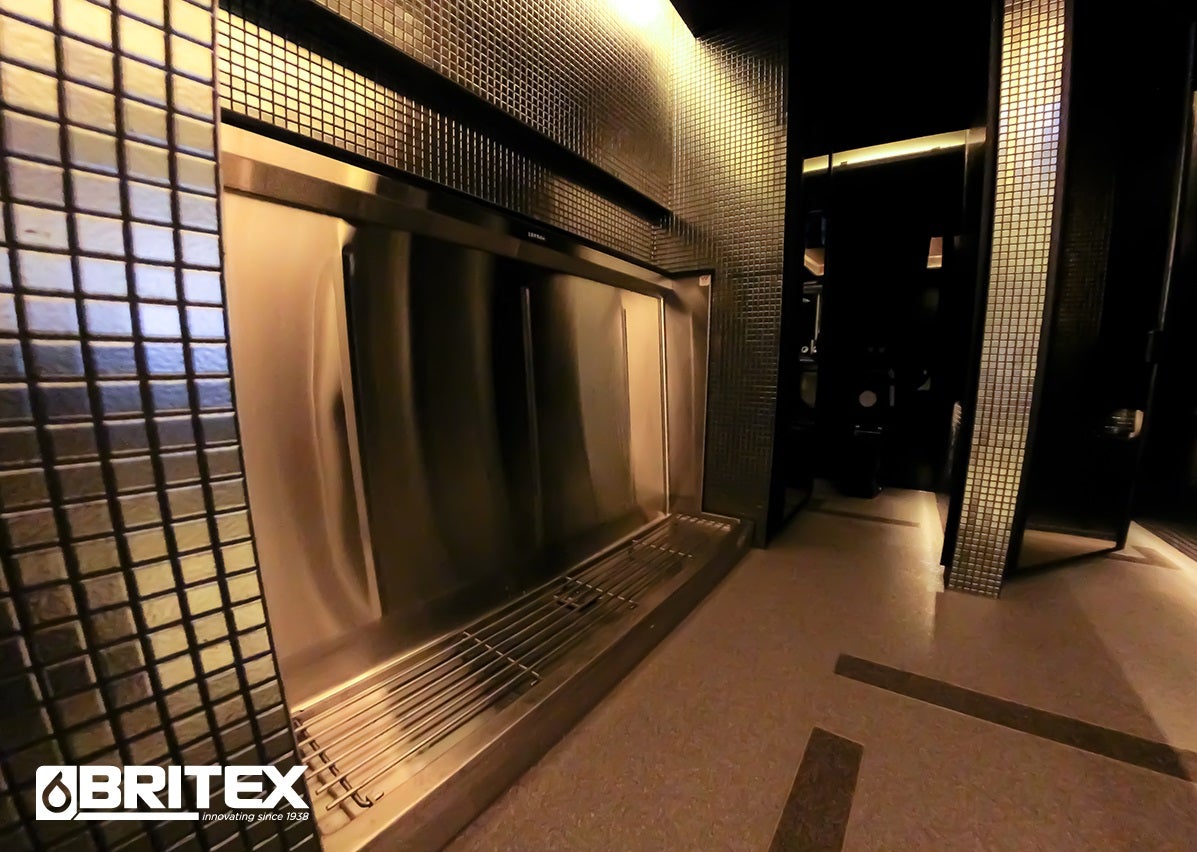
Generally fabricated from heavy-duty grade 304 stainless steel, the Sanistep urinal is the most frequently specified stainless steel urinal in Australia. Sanistep’s fully welded, sturdy rear reinforcement ensures a vandal resistant overall structural finish that is ideal for sports stadiums, schools, entertainment venues, and the local pub or club, while its unique design maintains the highest possible level of hygiene.
Specially designed to prevent drippage onto the floor and bathroom surrounds, Sanistep features a hinged grate and unique weir-style sparge that collects all liquids.
Both the grate and sparge are functional and easy to clean, allowing for a sleek, contemporary aesthetic alongside a high degree of functionality. When flushed, water travels down the urinal wall, cleans the floor base, and is disposed down the drain, ensuring thorough cleaning of the unit with every flush.
Sanistep Urinal
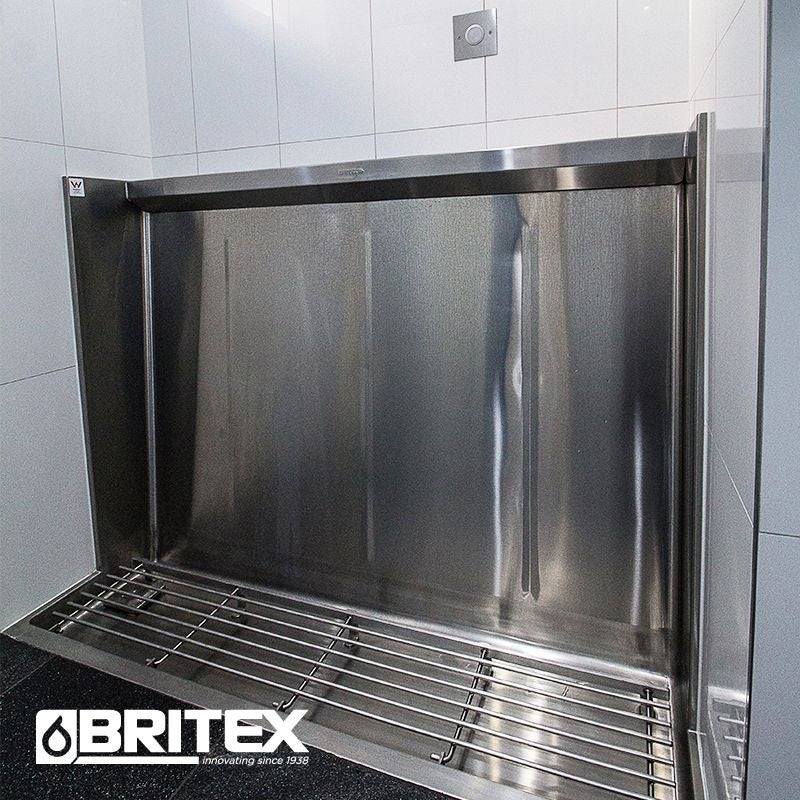
The most frequently specified stainless steel hinged grate urinal in Australia, manufactured in custom lengths to suit. Floor Mounted and Recessed models available.
With a 5* WELS accreditation, Sanistep is the ideal sustainable solution and can reduce water use per flush by more than 30%. Sanistep is compatible with Britex’s Smart Saniflush sensor system, which also boasts a 5* WELS rating.
Water efficient, fully concealed, and mains-powered, the automatic Smart Saniflush flushes after every 3 users, eliminating odours and germs caused by urine remaining in the base of the urinal for extended periods. The sensor system is completely concealed from view – making it perfect for maintaining a minimalist aesthetic and preventing vandalism – and is ideal for high traffic urinals where users are in quick succession.



-160x160-state_article-rel-cat.png)













